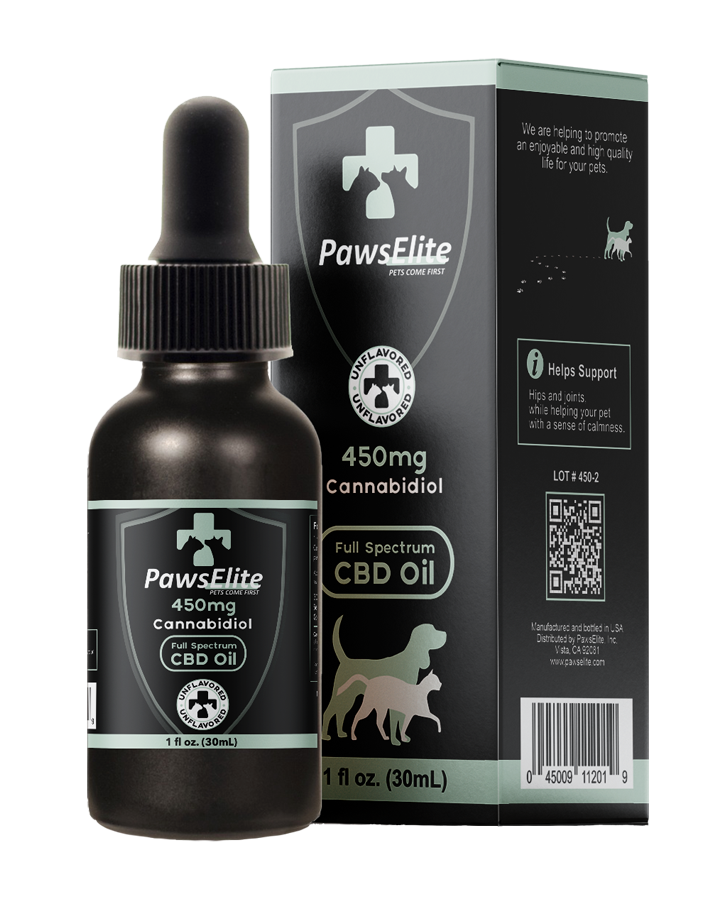
Selegiline for Dogs: Effective Treatment for Cognitive Dysfunction & Natural Alternatives
Share
Selegiline for dogs is a medication primarily used to help manage symptoms associated with canine cognitive dysfunction (CCD). CCD, often seen in older dogs, is similar to dementia in humans and can lead to confusion, disorientation, and behavioral changes. Selegiline, commonly sold under the brand name Anipryl for dogs, is designed to enhance the levels of certain neurotransmitters, like dopamine and serotonin, in the brain, which can help improve mental function and behavior.
In this article, we’ll explore the benefits of selegiline for dogs, how it works, potential side effects, and what pet owners need to know when using this medication. We'll also discuss serotonin syndrome, a rare but serious condition that can occur in dogs receiving selegiline treatment.
What is Selegiline for Dogs?
Selegiline is a medication commonly used in dogs to treat canine cognitive dysfunction (CCD), a condition that affects older dogs' mental function, leading to symptoms similar to dementia in humans. Selegiline works by increasing the levels of certain neurotransmitters in the brain, primarily dopamine and serotonin. These chemicals are crucial for brain function, mood regulation, and cognitive performance.
Under the brand name Anipryl, selegiline is specifically formulated for dogs and helps improve cognitive function by inhibiting the breakdown of dopamine. This leads to better mental clarity, improved behavior, and a reduction in symptoms such as confusion, anxiety, and disorientation. While primarily used for CCD, Anipryl can also be prescribed to treat other conditions, including hyperadrenocorticism (Cushing's disease) in dogs.
How Selegiline Works in Dogs
Selegiline for dogs is an effective medication primarily used to treat canine cognitive dysfunction (CCD), a condition that affects the mental abilities of older dogs. CCD is similar to dementia in humans, and dogs with this condition may show signs of confusion, disorientation, and altered behavior. Selegiline works by affecting the brain's chemical balance, particularly increasing the levels of two important neurotransmitters: dopamine and serotonin.
Increasing Dopamine and Serotonin Levels
Dopamine and serotonin are chemicals that play a vital role in brain function, mood regulation, and cognitive abilities. In older dogs with CCD, these neurotransmitters may be deficient, contributing to the cognitive decline seen in the condition. Selegiline helps increase dopamine levels, which is crucial for improving mental clarity, focus, and behavior.
By also boosting serotonin levels, selegiline helps regulate mood and reduces anxiety, which are common issues in dogs with cognitive dysfunction. This combination of effects leads to improved overall mental function and a reduction in symptoms like disorientation, repetitive behaviors, and anxiety, making it easier for dogs to interact with their environment and their owners.
Selegiline has been shown to be an effective treatment for managing CCD in older dogs. It can help slow the progression of the disease and improve the quality of life for affected dogs, allowing them to remain more active, engaged, and mentally sharp. However, it’s important to use this medication under the guidance of a veterinarian to ensure proper dosage and monitoring for any side effects.
Dosage and Administration of Selegiline for Dogs
Selegiline for dogs is typically prescribed in the form of a tablet, and the dosage is determined based on your dog’s weight and the severity of their condition. The most common dosage for selegiline is 0.5 mg per pound of body weight, given once daily. However, the exact dosage may vary depending on the individual needs of the dog, and it’s crucial to follow your veterinarian’s instructions carefully.
How Selegiline is Administered
Selegiline is usually given orally, and it is important to ensure your dog takes the medication consistently at the same time each day. Some dogs may be picky about taking pills, so it may help to hide the tablet in a treat or food to encourage them to take it. If your dog has difficulty swallowing pills, ask your veterinarian for advice on alternative administration methods, such as using a pill pocket or crushing the tablet and mixing it with food.
Importance of Consulting a Veterinarian
Before starting your dog on selegiline, it is essential to consult with a veterinarian to determine the correct dosage based on your dog’s health status. Your vet will assess factors like your dog's age, weight, and the severity of their cognitive dysfunction to ensure the right treatment plan. Additionally, your vet will monitor your dog’s response to the medication over time, adjusting the dosage as needed.
Always avoid adjusting the dosage without your vet’s approval. Overdosing or underdosing can lead to complications, including side effects or ineffective treatment. Regular follow-up visits are essential to ensure that the medication is working as intended and to check for any potential side effects.
Potential Side Effects of Selegiline for Dogs
Like any medication, selegiline for dogs can cause side effects, although not all dogs will experience them. The most common side effects are typically mild and may include:
- Vomiting
- Loss of appetite
- Diarrhea
- Restlessness
- Lethargy
These side effects often subside as the dog’s body adjusts to the medication. However, if these symptoms persist or worsen, it’s important to consult your veterinarian. For more information on managing common side effects in dogs, you can visit Paws Elite's Dog Health Resources.
More Serious Risks: Serotonin Syndrome
A more serious, but rare, side effect of selegiline use in dogs is serotonin syndrome. This condition occurs when there is an excessive amount of serotonin in the brain, which can result from interactions with other medications or improper dosages of selegiline.
Symptoms of serotonin syndrome in dogs include:
- Tremors or muscle rigidity
- Increased heart rate
- Dilated pupils
- Severe agitation or hyperactivity
- Vomiting
- Seizures
If your dog shows any of these symptoms while on selegiline, it is critical to seek emergency veterinary care immediately. Serotonin syndrome requires prompt treatment to prevent further complications. You can find more information on recognizing and treating serotonin syndrome on Paws Elite’s Health Tips.
To minimize the risk of serotonin syndrome, it’s essential to inform your veterinarian of any other medications your dog is currently taking, as certain drugs, such as other serotonin-boosting medications or antidepressants, can interact with selegiline. Always follow the prescribed dosage and consult your vet before making any changes to your dog’s medication regimen.
In most cases, with proper veterinary supervision, selegiline can be a safe and effective treatment for dogs with cognitive dysfunction, helping to improve their quality of life. However, it’s important to remain vigilant for any adverse reactions and act quickly if serious symptoms arise. For additional advice on dog health and safe medication practices, refer to Paws Elite's Expert Guides.
Serotonin Syndrome in Dogs
Serotonin syndrome is a potentially life-threatening condition caused by excessive levels of serotonin in the brain. In dogs, this can occur if they receive too much of a serotonin-boosting medication, like selegiline for dogs, especially when combined with other drugs that increase serotonin levels.
Symptoms of serotonin syndrome in dogs include:
- Tremors or muscle rigidity
- Restlessness or agitation
- Dilated pupils
- Increased heart rate
- Vomiting
- Seizures
If you notice any of these symptoms in your dog while on selegiline, it's crucial to contact your veterinarian immediately. Serotonin syndrome requires urgent care to avoid serious complications.
How Selegiline Could Lead to Serotonin Syndrome
Selegiline is designed to increase dopamine and serotonin levels in the brain. However, if misused or combined with other medications that also increase serotonin (such as certain antidepressants or pain relievers), the serotonin levels can become dangerously high. This can trigger serotonin syndrome, which is why it's essential to always follow your veterinarian’s instructions and inform them of any other medications your dog may be taking.
Recognizing and Treating Serotonin Syndrome
Recognizing serotonin syndrome early is vital for effective treatment. If your dog shows any symptoms of this condition, seek emergency veterinary help right away. Your veterinarian may provide immediate treatment to stabilize your dog, such as discontinuing the serotonin-boosting medications and possibly administering drugs to counteract the effects of excessive serotonin.
To reduce the risk of serotonin syndrome, never adjust your dog’s medication without consulting your veterinarian. Always ensure that your vet is aware of any additional treatments or supplements your dog is receiving.
For more information on managing serotonin syndrome and other canine health concerns, visit Paws Elite’s Health and Wellness Guides.
Alternatives to Selegiline for Dogs
While selegiline canine is a common treatment for canine cognitive dysfunction (CCD), there are other options available for managing the symptoms of CCD. Some of these include:
- Cognitive supplements: Supplements containing antioxidants like Vitamin E, Vitamin C, and omega-3 fatty acids may help support brain health and slow cognitive decline.
- Prescription medications: Other drugs, such as selegiline's alternatives (e.g., Anipryl for dogs), may be prescribed to help manage symptoms of cognitive dysfunction.
- CBD (Cannabidiol): CBD oil for dogs has gained popularity as a potential treatment for various conditions, including anxiety and cognitive dysfunction. It may help improve focus, reduce anxiety, and promote relaxation, which can contribute to overall mental health.
- Behavioral enrichment: Providing mental stimulation through puzzle toys, interactive games, and regular physical activity can improve a dog’s quality of life and help slow cognitive decline.
For more information on alternative treatments for canine cognitive dysfunction, check out Paws Elite’s Alternative Treatments for Dogs. These resources provide helpful insights into managing your dog’s health using a holistic approach.








